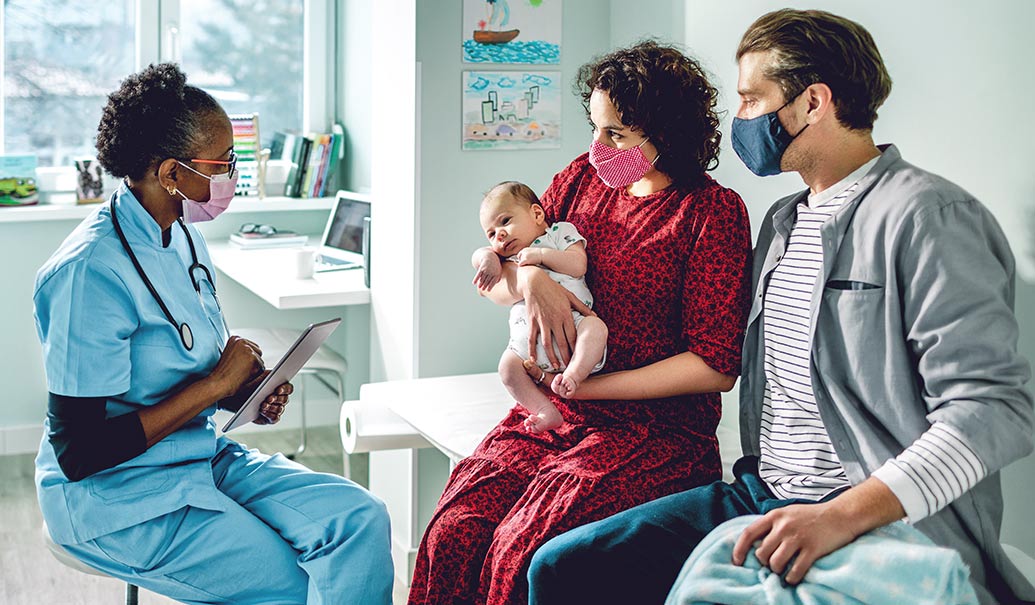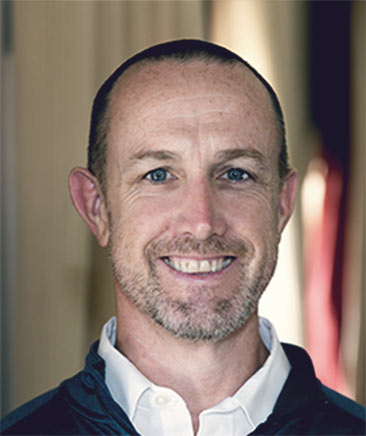The process of commercializing one of the first gene therapies approved in Europe raised a number of unique challenges for Novartis Gene Therapies (GTx) and the launch of their treatment for spinal muscular atrophy (SMA). ZS worked closely with GTx as they pioneered the launch of Zolgensma® (onasemnogene abeparvovec), a gene replacement therapy (GRT), and the digitization of a custom online ordering portal for the product. ZS’s Malik Kaman and Rebecca Bub recently sat down with Vincent Lévêque, head of marketing and commercial operations for GTx in Europe, to discuss what they learned during the commercialization journey and share their thoughts for other cell and gene therapy (C>) manufacturers.
Rebecca Bub: With Zolgensma, GTx was one of the first companies to commercialize a gene therapy in Europe. Can you talk me through what was going through your mind as you approached the task of preparing commercial operations for a treatment for SMA, a rare genetic disorder?
Vincent Lévêque: There were three priorities: the patients, the healthcare professionals (HCPs) and the SMA community.
Our work is all about supporting SMA patients. They’re at the center of what we do and strive for. The nature of SMA triggers a sense of urgency at every stage of the journey. Indeed, SMA is characterized by progressive degeneration and irreversible loss of spinal motor neurons. Days are neurons, and our responsibility is to excel in optimizing and accelerating the journey of appropriate patients receiving Zolgensma. The responsibility of the disease community and the pharmaceutical industry is to speed up patient identification and referral to treatment centers. Finally, the patients need to go through antibody testing to ensure they are eligible for GRT. This step needs to be seamless to ensure that patients receive their treatment as fast as possible.
One critical success factor is our partnership with customers and the way we take it to the next level to accelerate delivery of treatment to babies with SMA. Also, the innovation required to develop a GRT should be reflected in how we work with HCPs.
We also must consider the community around this disease. You have patients, patient organizations, HCPs, payers and politicians who all play a role in accelerating diagnostics, access to treatment and follow-up. The ecosystem around this disease requires partnerships with multiple stakeholders. With a product this complicated, we needed to reconsider how to bring customer experience to the next level to serve the ecosystem.
Because we are launching a product that was first-in-class, we knew we wouldn’t have all the answers. We needed to partner with the right experts in the community, as well as the right consulting partners. No pediatric neurologist had experienced a cell or gene therapy before Zolgensma.
Malik Kaman: We were so excited to get the opportunity to partner with you because we knew from our early experiences with autologous cell manufacturers that the patient and the provider experience were going to be critical to commercial execution and overall success of the product. It was an invigorating challenge to think about the operational complexities, from shipping and logistics to AAV9 testing.
When you think about this end-to-end process, it’s incumbent on C> manufacturers to get started much earlier than they traditionally might think they need to. It’s critical because during clinical trials, you’re defining workflows involved in manufacturing and shipping the product and onboarding sites that are going to become a part of your label and impact your customer experience. So it’s important to start thinking about getting this done in registrational trials. Because of this, we’re really seeing this melding of disciplines that would traditionally be manufacturing only, or clinical trial or marketing only.
RB: Once Zolgensma was launched, how was everything working? And what adjustments did you need to make to continue your goal of advancing customer excellence?
VL: At Zolgensma’s launch, we looked at the patient and product journeys we had mapped out and the interconnection of the internal and external stakeholders involved in the journey. Then we asked, “What can we do, as a pharma company, to further improve this journey and accelerate the time to treatment?”
So, we looked at the marginal gains theory. We realized we could make a number of small changes that would have a large impact on overall efficiency, which in time could result in a big improvement. Through our cross-functional marginal gains project, we identified opportunities to develop some very impactful initiatives that are making a huge difference. A big takeaway was the digitalization of our operating model, which lowered risk and mistakes and accelerated procedures, while bringing customer excellence to the next level. Digitalization adds a level of transparency and quickness to our process, which leveled up the customer experience we delivered.
One of the main outcomes of our digitalization efforts was an online ordering website called SMA-Z. The original idea was to provide a platform for hospital pharmacists to order antibody testing kits and Zolgensma. Then it became a digital companion to support all the HCPs and pharmacists along the different steps of the patient and product journey.
The customer service team told us that before the online ordering tool, 25% of the orders they received required calls to the hospital to obtain missing information. For example, some of the fields were not filled in correctly or handwriting was illegible. This required follow-up communication with HCPs, which significantly delayed the treatment journey.
MK: Beyond reducing risk of errors, we see clients benefiting from the sharing of real-time data in digital ecosystems, and the ability to see the product across all the stages of its journey. This allows systematic review of inefficiencies in the system and across all the partners touching the product, such as contract development and manufacturing, logistics and hospitals.
RB: After going through this process, what were some of your key learnings? What advice would you give to other C> manufacturers looking to launch products in the near future? When would it be good to have a digital ecosystem in place?
VL: It’s important to develop the digital ecosystem as soon as possible. It’s not easy—you’ll be facing a lot of IT requirements, standard operating procedures, regulatory, compliance and legal questions. And it’s challenging to make it happen on time.
Ideally, you should have your entire digital ecosystem in place prior to launch, because if it’s not in place, it becomes an issue of change management and teaching people to use a new system while the habits are in place. It’s harder to set up retrospectively.
MK: Some other considerations that C> manufactures should think through include recognizing that you’re likely one of many different platforms that pharmacists and hospitals must use. Until some future point when the industry has consolidated around the two to three dominant platforms, it’s important to understand that each incremental platform creates some additional administrative burden. Less is more—keep it simple.
It’s also important to optimize touchpoints for the HCPs and other stakeholders using the platform. You want to automate the workflow as much as possible. We’ve seen clients with more than 100 interactions, from the point of placing an order to final infusion. This simply isn’t scalable. Again—keep it simple.
Finally, you should reconsider your customer-facing roles to explicitly include customer service. It’s not enough to try to handle this through a medical information hotline.
RB: Looking ahead, if we think about 2030, there’s going to be more than 30 competitive therapies on market. What do you think is the next set of challenges that these companies are going to face?
VL: Some of the challenges will remain the same as it relates to rare diseases: disease awareness, patient identification, testing, time to treatment, early engagement with patient advocacy groups and customer excellence, among others.
When it comes to gene therapy, there will be some challenges on the payer side. Current healthcare systems are designed for chronic treatment that treat chronic diseases. While Zolgensma is paving the way, there is a lot of work to do on the payer side to accommodate the one-time treatment for chronic diseases. Furthermore, long-term safety data will always be limited at launch, and the risk-benefit ratio will always remain a discussion point. The industry and the payers will have to constantly innovate with new risk-sharing schemes.
Additionally, the go-to-market model and strategy will be a challenge. This is because, in cases where you are the first entrant, you will launch into market which has a “bolus” of patients who need treatment. It is likely to take three to four years to treat this initial group of incident and prevalent patients. After the main pool of patients has been treated, the incident patients will likely be the only long-term source of business. It’s important to have a lean and agile organization that can scale with demand and adapt quickly at different stages of the product life cycle, minimizing financial risk. Digitalizing operations, in terms of the patient and product journeys, and interactions with HCPs and internal processes, can support this.
MK: Today, we’re mostly talking about rare indications and small patient populations, with limited competition. However, in the not-too-distant future we’ll be talking about much larger indications with multiple competing assets. We need to consider how our customer service and logistics processes will scale to serve this number of patients effectively. We will need to think about how to expand site capacity to enable access while continuing to provide a great experience for our customers.
I also think that pharma needs to think more about the type of data they are generating to prove product value. Mark Trusheim at CAR-TCR noted that manufacturers will routinely spend hundreds of millions of dollars generating their registrational data sets and making clinical arguments to get marketing authorization. But then when they go to the payer, they’ve spent roughly $100,000 coming up with the HEOR [health economic outcomes and research] data on which 50% of their reimbursement argument is lying. Mark was exactly right. If you’re going to be making an HEOR argument about pricing, you probably want to think earlier on about how you’re going to collect data to prove that out.
In five years, you’ll be competing with multiple players, so this integrated experience is going to be really important to patients. It’s really important to providers and payers. If you’re not proactively thinking about that integrated experience in the data sets that you’re going to deliver to prove your value proposition, then you’re going to be badly behind the game.
RB: Thank you, Vincent and Malik. This has been a great discussion!
Add insights to your inbox
We’ll send you content you’ll want to read – and put to use.















